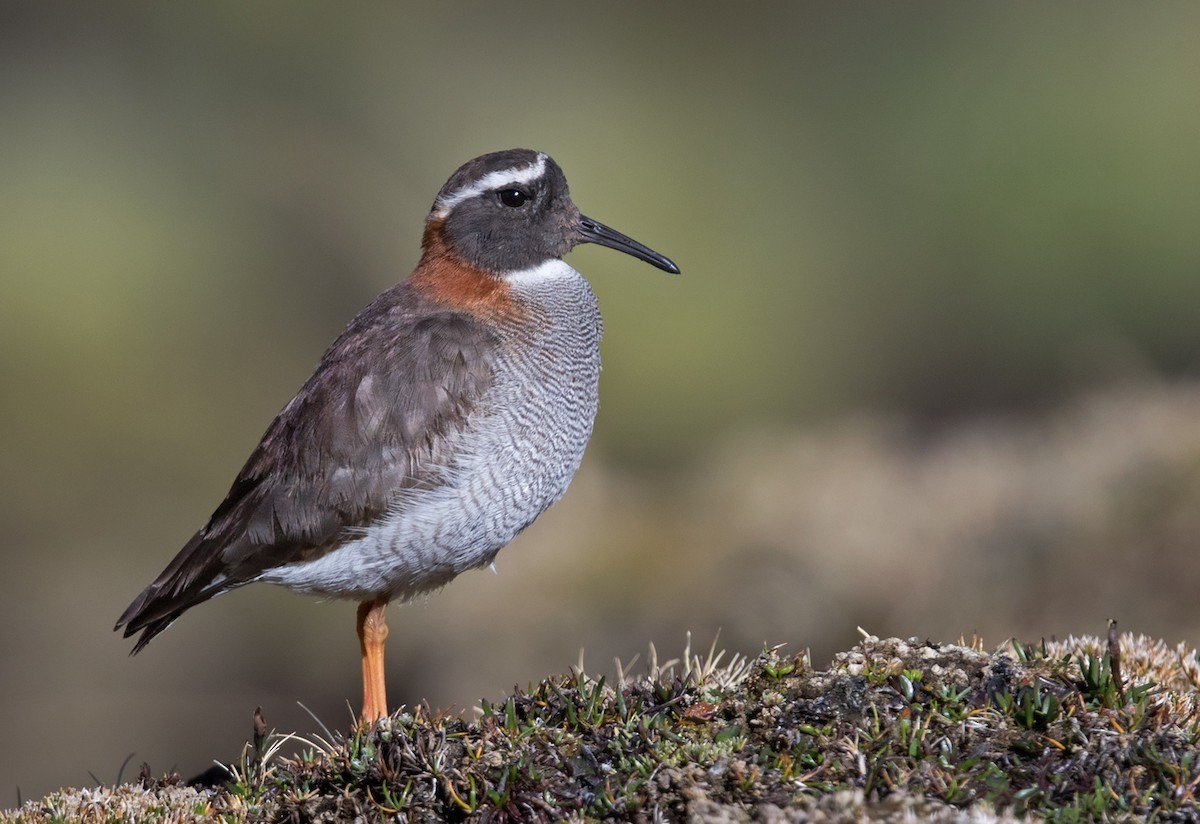Diademed Sandpiper-plover
A species of Diademed Sandpiper-plover Scientific name : Phegornis mitchellii Genus : Diademed Sandpiper-plover
Diademed Sandpiper-plover, A species of Diademed Sandpiper-plover
Botanical name: Phegornis mitchellii
Genus: Diademed Sandpiper-plover
Content
Description General Info
 Photo By Lars Petersson
Photo By Lars Petersson Description
The diademed sandpiper-plover or diademed plover (Phegornis mitchellii) is a species of bird in the plover family Charadriidae. It is monotypic within the genus Phegornis. The relationship of this species to other plovers is uncertain, a 2010 study suggested it may be related to the Australian dotterels. The species is found in the Puna grassland ecoregions of the Andes Mountains from Argentina and Chile, through Bolivia to Peru. In this habitat it prefers mossy tundra, high-altitude grassland, bogs and swamps. It is an altitudinal migrant, breeding between 3,500–5,000 m (11,500–16,400 ft) above sea-level, but wintering at 2,000 m (6,600 ft). The diademed sand-piper-plover is a small compact plover, 16.5–19 cm (6.5–7.5 in) in length and weighing 28–46 g (0.99–1.62 oz). It has a black head with a white stripe above the eye meeting at the crown, a chestnut neck, a white throat and chest barred in black, and grey upperparts. The wings are short and the flight undulating. The sexes are alike and the juvenile has a grey head, less distinct barring on the front and brown upperparts. They breed in the summer months, laying two eggs, olive-grey with black spots, in a circular nest of grasses. The downy chicks are dark brown, marbled with black above and lighter below. The species is poorly known and uncommon, and rarely recorded. While its habitat is thought to be secure, it is possible that overgrazing is a threat. 
Size
19 cm
Nest Placement
Ground
Feeding Habits
Diademed Sandpiper-plover forages alone or in pairs, often in secluded bog areas. It probes vertically with its bill and gleans prey from aquatic vegetation. Though specifics on diet are not provided, diademed Sandpiper-plover's feeding behavior suggests a diet of small invertebrates.
Habitat
The habitat of diademed Sandpiper-plover typically includes cushion-plant peatlands and bogsvideo, characterized by matted cushion-plant vegetation, notably Distichia bogs. These habitats are also associated with gravel or grass-lined lake and stream shorelines. The environmental conditions consist of grassy banks intertwined with streams and seasonal pools, providing an optimal foraging environment. The peatlands' presence is linked to specific hydrological conditions influenced by nearby glaciated regions.
Dite type
Aquatic invertebrate eater
General Info
Feeding Habits
Bird food type

 Photo By Lars Petersson
Photo By Lars Petersson